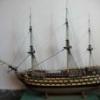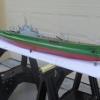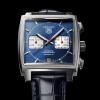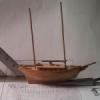Supplies of the Ship Modeler's Handbook are running out. Get your copy NOW before they are gone! Click on photo to order.
×
-
Posts
4,874 -
Joined
-
Last visited
Reputation Activity
-
 gjdale got a reaction from src in Borodino by Captain Slog - Dom Bumagi - 1:200 - CARD
gjdale got a reaction from src in Borodino by Captain Slog - Dom Bumagi - 1:200 - CARD
Paint job looks great Slog. The extra effort was well worthwhile.
-
 gjdale got a reaction from hamilton in 1949 Chris-Craft 19' Racing Runabout by gjdale - FINISHED -Dumas - 1:8 Scale - RADIO
gjdale got a reaction from hamilton in 1949 Chris-Craft 19' Racing Runabout by gjdale - FINISHED -Dumas - 1:8 Scale - RADIO
Thanks very much Bug, Popeye, Lawrence, Rusty and all the "Likes".
A minor update this week....
Deck Planking
Planking the deck has presented no particular problem thus far. The instructions direct you to alternate a caulking strip with a plank, but I found it easier to laminate one of each together and then shape and fit as a single unit. The only tricky part of shaping was the last plank on either side around the side of the cockpit, which just took a little time and patience to ensure a good fit. The ends of the planks were trimmed close to the forward end of the cockpit and then taken closer still with a sanding drum in the rotary tool, before finishing by hand. Once all the planking is complete, the surface will be sanded level such that all caulking strips will be level with the planks (at the moment they stand just a little proud). Not bad for a day’s work! There will be a brief hiatus for a couple of weeks as I’ll be travelling with work.
-
 gjdale got a reaction from hamilton in 1949 Chris-Craft 19' Racing Runabout by gjdale - FINISHED -Dumas - 1:8 Scale - RADIO
gjdale got a reaction from hamilton in 1949 Chris-Craft 19' Racing Runabout by gjdale - FINISHED -Dumas - 1:8 Scale - RADIO
Planking
Planking the hull turned out to be a little trickier than anticipated, and included a “near disaster”. Planking the first side, I followed as closely as I could the lining out marks, having first tapered the planks to fit against these. The problem was in the lateral bending of the planks. Ideally, they should have been spiled. However, the planks provided are not sufficiently wide enough to spile (and I didn’t have any sheet stock that I could substitute). The kit planks are also wide enough that edge bending is very difficult, if not impossible. The result was a less than even surface. On the second side, I decided to adjust the lining out marks to allow the first (chine) plank to fall naturally – which took it exactly one strake higher on the lining out marks at the bow. This meant that I had to insert a wedge shaped piece below this plank, but the remaining planks on that side went on somewhat more easily than the first side. The result also meant that I managed to maintain alignment of planks on either side at the bow.
The near disaster came when I went to give the hull an initial sanding to even out the surface. Following the lead of others who have gone before me, I broke out the powered mouse sander and set to. I must have been a little too aggressive in one place because I suddenly noticed that I had sanded through the entire thickness of the planking and could see the white plastic showing through. Oops….. I also discovered that on the other side, one plank had developed a hole – not sure how, but the timber is very dry and brittle. Hmmmm, two repairs to make!
My first thought on repairing these was to use epoxy putty, but one of them was quite a large area and was going to look dreadful. After sleeping on it for a couple of nights, I decided that I would remove a section of the planking and patch it with new planks. Another few days to consider exactly how to achieve this, and I finally gave it a crack yesterday. I used a mini circular saw blade held in the Proxxon rotary tool and gently made some “stop” cuts at the extremities of the section I wanted to remove. I was then able to insert the blade of a No.11 Exacto knife and prise the damaged planking free. A quick clean up with the drum sander in the Proxxon to remove the residual glue and it was ready for the new timber. I took my time in shaping in the “patch” parts, and even managed to spile some thinner sections to get a very close fit. I also used some epoxy putty (Milliput) to blend the area at the bow where the timber transitions to the plastic sheeting of the hull bottom. After a careful HAND sanding, I was quite pleased with the results. Here are a couple of views of the completed repair job (forgot to take pictures of the “before”).
And here is a close up of the bow, showing the alignment of the planking. The stem is not perfect, but as it will be covererd later by the cutwater, I’m happy with it as is.
Then, at last, it was time to start on the deck planking. The process starts with the attachment of the edge or margin boards. These are die cut parts, slightly oversized, and are relatively easy to fit. Once in place, the outer edges are sanded back flush with the sides, and a strip of white “caulking” (.04” x .08” styrene) is applied to the inboard edge. The next step is to place the centre plank on the forward deck. This requires that a length of caulking be sandwiched between two planks (3/8” wide mahogany), then shaped to fit the bow and fixed in place down the centreline. Compared to the hull side planking, this was dead easy!
The remainder of the deck planking will follow a similar pattern, with a plank being glued to a strip of “caulking” before being shaped and affixed as a pair. I’ll be back when the deck planking is complete.
-
 gjdale got a reaction from hamilton in 1949 Chris-Craft 19' Racing Runabout by gjdale - FINISHED -Dumas - 1:8 Scale - RADIO
gjdale got a reaction from hamilton in 1949 Chris-Craft 19' Racing Runabout by gjdale - FINISHED -Dumas - 1:8 Scale - RADIO
Once again, many thanks for all the kind words and to those who hit the 'like' button. Progress has been slow lately due to other commitments, so only a mini-update this week.
Installing the sub-decking was straight forward:
Took the opportunity to fill some of the dings in the hull using a two-part Epoxy putty (Milliput Terracotta) and she is finally ready for planking.
The instructions would have you just lay complete planks the length of the hull, from the chine up to the sheer. I tried that on one side and wasn’t happy, so ripped it all off again. Then I lined-off the hull using tick-strips in an attempt to do better by tapering planks fore and aft and having the same number of strakes throughout. Here is the lined-off hull:
So far, the tapering seems to be working quite well. I've been using a miniature plane to taper the planks and have to say, it beats the pants off sanding! Much easier and far less mess. The supplied planks are not wide enough to spile, so I will likely use some shorter plank lengths in addition to tapering, to cope with the bow curvature. I got as far as laying three strakes the second time around before I ran out of CA kicker – a real must for this process. So, it’s back on hold until I can pick up some more supplies.
More pics once substantial progress has been made with the planking.
-
 gjdale reacted to DocBlake in Armed Virginia Sloop Patrick Henry by DocBlake - FINISHED - Lauck Street Shipyard - Scale = 1/32 - POF Admiralty Style
gjdale reacted to DocBlake in Armed Virginia Sloop Patrick Henry by DocBlake - FINISHED - Lauck Street Shipyard - Scale = 1/32 - POF Admiralty Style
I cut out 8 rosewood gun supports. For the metal caps I used a 1/4" square styrene tube and glued strip styrene to each end. I trimmed the styrene and cut of the caps. I drilled a pilot hole in each. They were then painted gunmetal color and glued to the gun supports. I enlarged the pilot holes to 1/16" diameter and fixed 4 yokes in place. The trunnions will be threaded through the yokes and guns and fixed with a drop of CA. The 4 starboard supports will have guns, the 4 port supports will be gunless.
-
 gjdale got a reaction from Piet in HMS VICTORY by Kevin - FINISHED - Caldercraft - 1/72
gjdale got a reaction from Piet in HMS VICTORY by Kevin - FINISHED - Caldercraft - 1/72
Great job on the repair Kevin.
-
 gjdale reacted to genericDave in Bluenose by genericDave - FINISHED - Model Shipways - 1:64 Scale
gjdale reacted to genericDave in Bluenose by genericDave - FINISHED - Model Shipways - 1:64 Scale
Main Rail
The main rail is complete!
I ended up using some sheets of 1/16" basswood and tracing the curve of the hull onto the sheet. I used those lines to draw out the shape of the rails, then cut it out so I had one long piece that ran the length of the ship. I added in the joint to match the stern piece that was previously installed, then worked my way forward.
Since I was using a single piece to make the rail, creating the scarf joints for the individual sections was easy - I just cut the sections apart in the shape of each joint. I also added in the wider 'ledges' that will hold belaying pins, based on the plans.
Each side was done separately, just in case the curve was slightly different.
Once all six sections were cut, they got sanded down, primered, and painted. Once they were glued in place, I used a metal file to make sure the joints were even. I used a little wood putty to clean up the joints and fill any gaps, then did a final coat of paint.
On the color...the plans call for white on the main rail. My research indicates the rails were almost certainly white (although a couple old b&w photos might show that the rail was black at some point...or those could just be misleading angles). So I know that white would be more 'historically accurate'. But, I've seen a lot of models that use black for the main rail, and I really like the look. So I went with black. At least it was a conscious choice
-
 gjdale reacted to mtaylor in Licorne 1755 by mtaylor - 3/16" scale - French Frigate - from Hahn plans - Version 2.0 - TERMINATED
gjdale reacted to mtaylor in Licorne 1755 by mtaylor - 3/16" scale - French Frigate - from Hahn plans - Version 2.0 - TERMINATED
Thanks for all the "likes" and comments. After getting everything else around the house done and then getting the new mill set up, i'm busily planking the lower deck.
The first six strakes are finally in and I'm happy with them although there's some serious sanding in my future as they aren't all the same thickness... But I've sorted out the planking scheme that I need to lay down. This deck is all 1 foot wide and 4" thick planking. It's actually thicker then the gundeck which is 3" thick but mostly not as wide. I'll fight that battle when I get to the gundeck as there are some varying widths and thicknesses there.
For the lower deck, as near as I can find, the planks are all run pretty much the same width from fore to aft with hook scarfs at the bow and some tapering at the stern. I'm going full width but with the partitions fore and aft, I'm not planking much beyond them... One reason is that the Admirals Plaque is behind the aft partition in the gunroom.
Here's a pic.
-
 gjdale got a reaction from mtaylor in HMS VICTORY by Kevin - FINISHED - Caldercraft - 1/72
gjdale got a reaction from mtaylor in HMS VICTORY by Kevin - FINISHED - Caldercraft - 1/72
Great job on the repair Kevin.
-
 gjdale reacted to Kevin in HMS VICTORY by Kevin - FINISHED - Caldercraft - 1/72
gjdale reacted to Kevin in HMS VICTORY by Kevin - FINISHED - Caldercraft - 1/72
the repair survived 24 hours, so im happy with it,
-
 gjdale got a reaction from mtaylor in Borodino by Captain Slog - Dom Bumagi - 1:200 - CARD
gjdale got a reaction from mtaylor in Borodino by Captain Slog - Dom Bumagi - 1:200 - CARD
Paint job looks great Slog. The extra effort was well worthwhile.
-
 gjdale got a reaction from Canute in Borodino by Captain Slog - Dom Bumagi - 1:200 - CARD
gjdale got a reaction from Canute in Borodino by Captain Slog - Dom Bumagi - 1:200 - CARD
Paint job looks great Slog. The extra effort was well worthwhile.
-
 gjdale reacted to rafine in Granado by rafine - FINISHED - Caldercraft - 1:64
gjdale reacted to rafine in Granado by rafine - FINISHED - Caldercraft - 1:64
We've had some rain down here in Florida lately. As always, rain means less golf and more modeling -- so....
A great deal has been done in the bow area. To begin with, I fitted the ply subdeck for the the forecastle. This required that I make and mount the lower portion of the galley stack, which was made from boxwood strip painted black with a walnut strip coaming. I also drilled the hawse holes at this time.
After the subdeck was on, I did the forecastle planking and tree nailing. This was done exactly as before for the other decking.
Next, I painted the forecastle portion of the outer hull blue to match the other blue parts. I then I added the forecastle cap rails and hances using the kit parts. The knight heads and timber heads were also added, using the kit parts. All of this was painted black. I also painted the upper stem black at this time.
Then, I made up the forecastle swivel gun mounts, exactly as for the quarterdeck and midship mounts, and glued them in place.
With all that work completed, I continued the sheer molding forward to the stem, using the same three piece construction as before.
Finally, I made up the anchor lining from boxwood strip. tree nailed it, and mounted it in place.
Now, it's time to face a task that is never fun for me -- the head work. I'm still trying to figure out exactly what I'll do and how I will do it. The only thing that is clear is that I will not be using the kit parts, but will attempt to follow the AOTS, using all scratch built parts.
Bob
-
 gjdale got a reaction from WackoWolf in Borodino by Captain Slog - Dom Bumagi - 1:200 - CARD
gjdale got a reaction from WackoWolf in Borodino by Captain Slog - Dom Bumagi - 1:200 - CARD
Paint job looks great Slog. The extra effort was well worthwhile.
-
 gjdale got a reaction from Captain Slog in Borodino by Captain Slog - Dom Bumagi - 1:200 - CARD
gjdale got a reaction from Captain Slog in Borodino by Captain Slog - Dom Bumagi - 1:200 - CARD
Paint job looks great Slog. The extra effort was well worthwhile.
-
 gjdale reacted to Captain Slog in Borodino by Captain Slog - Dom Bumagi - 1:200 - CARD
gjdale reacted to Captain Slog in Borodino by Captain Slog - Dom Bumagi - 1:200 - CARD
Hi All,
Thanks for all the comments and likes.
You may be on to something there Chris! I would imagine with your experience though lower hulls wouldn’t present too much of a problem.
Thanks for dropping by Slowhand. There are plenty of warts to see coming up! LOL
Thanks for the comment Brian. I am trying to avoid painting to gain experience trying to be as precise as possible.
Okay on with the progress. My lack of painting experience really showed by doing the boot top first as per the previous post. I am sure the more experienced painters spotted the trouble with doing that. I had no idea how difficult it would be to cover black with red! I used Tamiya’s Flat Red acrylic XF-7 mixed at a 2:1 ratio and after spraying coat after coat of paint the black overspray was still showing through. Also patches of the grey filler putty I used were still evident.
A plus point was that the boot top was very sharp and parallel and the red cover was very consistent, which is tricky using a small/medium size airbrush as the spray pattern isn’t that big for a largish hull…but I couldn’t live with it.
A trip to the local hobby stored procured a can of Tamiya TS-27 Matt White spray paint and after masking off the upper sections of the hull, blasted on some decent coats of white. Got to say I find Tamiya’s aerosols very good, giving great coverage and pretty forgiving also. The white soon covered up the previous red and black airbrushing with a nice smooth even coat.
It was back to airbrushing the complete lower hull again with the Red XF-7 and then masking off the 2.5mm boot top although this time I made it 3mm to make sure it covered the previous painting. Then the boot top was airbrushed in with Black XF-1. After peeling back the masking it turned out pretty good again. The red though isn’t as even and consistent as the first attempt but it is satisfactory to me. The lumps and bumps and filled areas are still evident in some sections but again thinking ahead and looking at the ship as a whole it shouldn’t look too out of place.
I came to like the bright red paper printing of the hull and the Flat Red isn’t too far off it as can be seen with the unpainted rudder. I will paint and fit that permanently closer to the end of the build as it is too vulnerable at this stage. Similarly the props are only temporarily placed for the photos and will leave off to the end also.
Here at last is the finished lower hull! I will give the whole thing a coat of Humbrol Matt Cote for protection and to flatten a couple of shiny areas where I accidentally splashed some thinners on it.
With that saga out of the way I am looking forward to getting back to some real paper modelling again. Next up will be to line the anchor shelf so I can permanently fit the upper hull section, which will allow the decking, upper hull structures and side hull skins to be fitted.
Cheers
Slog
-
 gjdale reacted to tlevine in HMS Atalanta 1775 by tlevine - FINISHED - 1:48 scale - from TFFM plans
gjdale reacted to tlevine in HMS Atalanta 1775 by tlevine - FINISHED - 1:48 scale - from TFFM plans
As mentioned above, I rebuilt the jeer bitts and crosspiece. Again, thanks to Dave for pointing it out. The only reason I can think of for the glaring mistake is a total brain shutdown. Forgive the Qtip fuzz on the crosspiece... It's gone now.
The stove flue is comprised of two sections. The lower section is conical and the upper is cylindrical. On most of the Swan class ships there is an angled piece with a baffle. On Atalanta and Fly the flue is straight. While I was waiting for Druxey's affirmation, I made up both types of ends for the stove flue, straight and angled. The conical section is made by cutting a v-shaped slit in an oversize brass tube. The tube was heated to remove the temper and slit was closed, resulting in a conical shape. This was then silver soldered and the top and bottom were cut off for the correct length. The upper and lower sections were then soldered together and the piece was blackened and coated with Floquil dull finish. I still need to make a metal plate for the coaming.
Druxey, maybe the captain "borrowed" the flue from Pegasus after enough rain ran down into the stove!
-
 gjdale reacted to Mike Dowling in Chaperon 1894 by Mike Dowling - FINISHED - Model Shipways - Sternwheeler Steamer
gjdale reacted to Mike Dowling in Chaperon 1894 by Mike Dowling - FINISHED - Model Shipways - Sternwheeler Steamer
Panama Port - silly me, I have built your boat already, I was thinking of someone else!
Anyway, Cathead you will be pleased to know that I agreed with you and all is now white !!
I have put on the boiler deck and all the uprights (Stationaries). I ignored the destructions and put the strip round the deck on first. I reckoned it would be easier as trying to bend it on boat would have been a nightmare. It also meant that I could slot the uprights in rather than put the strip over the top of them. I have also put the strips on the deck ready for the next lot of cabins. I can't decide at the moment whether to put all the bullrails on the lower deck next or leave them until later.
-
 gjdale reacted to genericDave in Bluenose by genericDave - FINISHED - Model Shipways - 1:64 Scale
gjdale reacted to genericDave in Bluenose by genericDave - FINISHED - Model Shipways - 1:64 Scale
Mooring Chocks and Bow/Stern Main Rail
I'm finally done painting and touching up. I finished the bulk of hull painting a few weeks ago, but my waterline wasn't clean enough. I did a pass at touching it up by hand, but wasn't happy with the results. I ended up sourcing some 1/16" tape, re-masked the entire hull, and re-sprayed both the red and black. This finally gave me an even, clean-edged waterline.
Finally I can stop masking and painting the hull, and get back to work.
A while back, I got some great help on understanding the mooring chocks. I decided that I didn't like the cast metal pieces provided by the kit. They were so small that they lacked detail and didn't clean up well. The kit pieces were basically a tube that runs through the bulwark, with a 'plate' that is visible outside the hull. I decided to only simulate the plate, since the tube/pipe wouldn't really be visible. I measured and cut some small plates from brass, and added holes to simulate the pipe going through the hull.
I mounted these on both the outside and inside of the bulwarks, and painted them to match the hull. (Shown here after the cap rails were started...more on that in a bit...). The black one on the outside of the hull is barely visible in this photo, but these were not supposed to stand out on the ship, so I'm OK with these kind of 'disappearing'.
I also started work on the main rail. This turned out to require some extra work! The kit provides laser cut pieces for the bow and stern. I cut those out, and did a test fit. Turns out they don't fit my hull. The bow piece wasn't far off, and could be made to work, but the stern piece just doesn't fit at all. I tried sliding it forward and backward, but no luck. It looks like my stern is a little wider than it should have been, so the provided piece doesn't fit.
So, I transferred the actual dimensions of the ship to paper, including stanchion locations, etc. I scanned this into the computer. I also scanned in the applicable parts of the plans so I could get the actual shape of these pieces in the computer at the same scale. Using the digital versions, I verified that the pieces had the same problems (in order to verify that my ship dimensions got imported correctly).
Next I re-drew the pieces to match my hull shape correctly. I was careful to make sure the width of the rail was the same once it got out over the bulwarks. The image below shows the original pieces (red) compared to my custom pieces (grey).
I printed out the templates for my modified pieces, cut them out, and verified the fit. They looked good, so I fixed the templates to some 1/16" basswood sheets and cut out the new pieces.
My custom pieces (top) compared to the kit provided pieces (bottom):
These were then sanded, primered, painted, and glued in place.
I've also started in on the rest of the rail, but I'll post that separately once I get it completed. It is Labor Day weekend, so I've got some extra time to spend in the shop (when I'm not distracted by the start of college football).
-
 gjdale got a reaction from Canute in Greenwich Hospital barge of 1832 by druxey - FINISHED - 1:48 scale
gjdale got a reaction from Canute in Greenwich Hospital barge of 1832 by druxey - FINISHED - 1:48 scale
Congratulations Druxey, on what will almost certainly be a best seller. I've given the Admiral a big hint (link to the SeaWatch page ) as I have a birthday coming up in a few months time.
-
 gjdale got a reaction from cog in 18th Century English Longboat c.1760 by slagoon - Model Shipways
gjdale got a reaction from cog in 18th Century English Longboat c.1760 by slagoon - Model Shipways
Great to see you back Sarah. I'll look forward to following along with this one.
-
 gjdale reacted to rdestefano01 in great wood combos
gjdale reacted to rdestefano01 in great wood combos
Mikey thats a beautiful cross section. I hope i will be able to achieve somthing like that. It's perfect.
Gjdale in my head I was saying "I dont even wangt to stain, different woods are different color, can i use that concept?" I didn't think it was a thing. Then boom you told me about painting with wood! I'm going to view your log asap.
Jax I was just researching cherry actually I have a big cherry tree in my yard that is coming down in the next few weeks...I wonder. I cant seem to like basswood at all, I dont know why though.
-
 gjdale reacted to xken in USS Constitution by xken - Model Shipways - Scale 1:76.8
gjdale reacted to xken in USS Constitution by xken - Model Shipways - Scale 1:76.8
I finally have finished up trammeling the side tackle lines for the carronades. This was as I anticipated a slow tedious process; but a very rewarding one with great results. I thought I would share some tips and tricks of how I did them for the benefit of some who may also want to do them. First I was using Chuck's 3mm hooks, 3/32" blocks and .008" rope line. The blocks were drilled with #76 drill bit for easier rigging. Once hooked to the ceiling wall and sled the real trick was wetting the rope line with a Q-tip (ear bud) and keeping the line wet as it was trammeled. The use of 50/50 mix of glue and water was used to hold line in blocks or hold knots. The 50/50 soaks in better with the wet rope; however may require a second application prior to cutting the rope, test hold first. The end of the rope was fed forward to the gun port and pulled up and back around the lines being wrapped. Use a gentle touch when wrapping the rope and snug up rather than pull tight. Once dry the wrap can be adjusted slightly to make even if not.
I left my breech lines unglued and it would be better not to glue the large cleats or belaying pin racks in place until the guns are rigged. I was able to do them with these in place, but it would be much easier with out them in the way.
A picture is worth a thousand words so here are a few that may better help.
Next on to the chain plates. This weekend I will be helping the wife with her craft show again. So no work until next week.
-
 gjdale got a reaction from Canute in great wood combos
gjdale got a reaction from Canute in great wood combos
Rob,
When I built my Bomb Vessel cross section I used a technique called "painting with wood", where I used different spieces of wood instead of paint to achieve the same effect. Link to my build log in the signature block below if you're interested. I've described where I've used each timber spieces within the log.
-
 gjdale got a reaction from Piet in HMS VICTORY by Kevin - FINISHED - Caldercraft - 1/72
gjdale got a reaction from Piet in HMS VICTORY by Kevin - FINISHED - Caldercraft - 1/72
Well done Kevin, and I see from the photos that you have the domestic testing facility ready for sea trials too!









